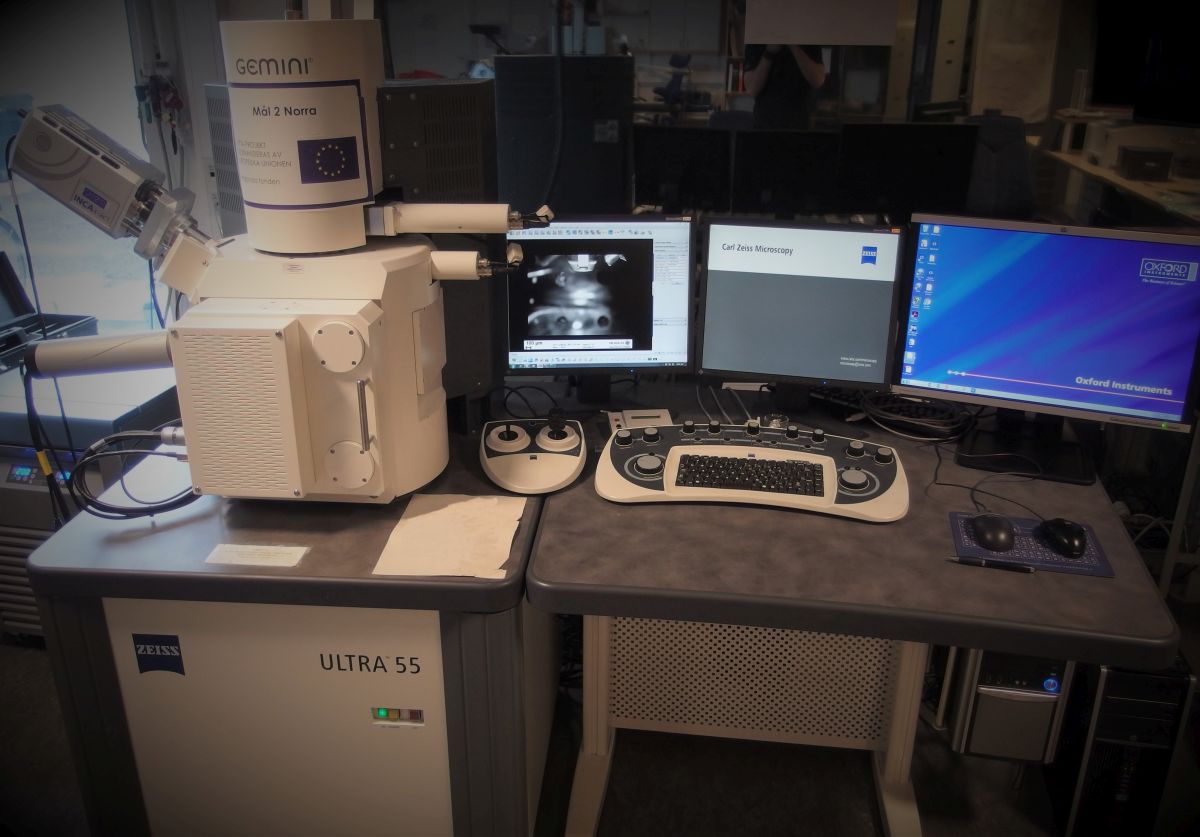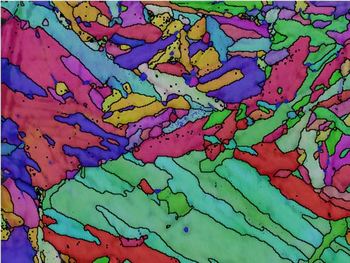Electron backscatter diffraction (EBSD)
EBSD (Electron Backscatter Diffraction) is an analysis technique used to study microstructure, crystal orientation, dislocation density, deformation twins and constituent phases of a material. In an EBSD analysis, the sample is tilted 70 ° to the diffraction camera and irradiated with electrons. Some of the electrons that hit the sample will spread back out again and these are detected by a phosphor screen. Electrons which exits the sample and fulfils the Bragg diffraction criteria for a specific plane are detected with an intensity difference that creates so-called Kikuchi bands. These provide information about the crystal from which the electrons are scattered. By allowing the electron beam to sweep over the surface of the sample, information is obtained from a larger area and the structure of the material can be analyzed.

Result (Example)

Electron backscatter diffraction (EBSD) image of a tool steel. Different colors represent different grain orientaion in the material.

